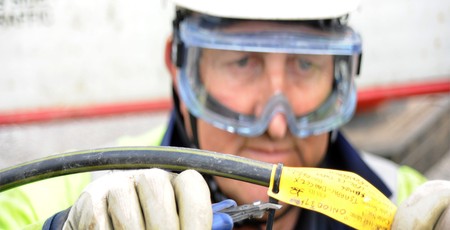Most ISPs hit by new speed claim guidelines
August 7, 2018 | 11:21
Companies: #advertising-standards-authority #bt #ee #john-lewis-broadband #plusnet #post-office #sky #sse #talktalk #utility-warehouse #virgin-media #vodafone #which #zen-internet

The impact of new advertising guidelines which prevent internet service providers (ISPs) from using misleading 'up to' speed statements is officially being felt, with a study showing that all but one ISP has dropped their claimed speeds by as much as 41 percent.
Announced by the Advertising Standards Authority back in November 2017, the change to advertising guidelines for ISPs was designed to address the issue of misleading performance claims. Under previous guidelines, ISPs were allowed to advertise speeds that as few as ten percent of customers could ever reach simply by adding the weasel phrase 'up to'. Following the revision, ISPs are only allowed to use median download speeds achieved across its customer base at peak times.
In an ideal world, such a change would have made little difference. The gap between advertised and average speeds, though, turns out to have been impressively wide: Consumer rights advocacy group Which? has published its findings into the impact of the ruling, finding that all but one ISP has either dropped the claimed speeds on offer, in some cases by as much as 41 percent, or removed speed claims from their advertising altogether.
In its findings, Which? claims that ADSL broadband offers from BT, EE, John Lewis Broadband, Plusnet, Sky, Zen Internet, Post Office, SSE, TalkTalk, and Utility Warehouse went from 'up to 17Mbps' under the old guidelines to 10Mbs or 11Mbs under the new. More expensive packages, meanwhile, saw smaller changes, with twelve of the biggest ISPs with packages ranging from 'up to 17Mbs' to 'up to 100Mbps' dropping their claims by an average of 15 percent.
Other ISPs have dropped their speed claims altogether: TalkTalk has removed specific performance claims from the majority of its packages, while Vodafone's Fibre 38 and Fibre 76 packages are now known as Superfast 1 and Superfast 2. The only winner from the study was Virgin Media, which offers a fibre-to-the-cabinet service which enters homes via a coaxial cable rather than using the existing telephone network: Which? found that its advertised speeds had actually increased following the new guidelines.
'Customers will now have a much clearer idea of the speeds that can be achieved when they are shopping around for broadband,' says Alex Neill, Which? managing director for home service, of the findings. 'For those still struggling to get a reasonable speed or connection, the Government must press ahead with its crucial plans to deliver the service that broadband customers need, without it costing them the earth.'

MSI MPG Velox 100R Chassis Review
October 14 2021 | 15:04








Want to comment? Please log in.